One of the most cost-effective ways to improve the energy efficiency in your home is by weatherstripping your windows and doors. Gaps and leaks around your windows can let cold air seep in and raise heating costs by 20% according to the U.S. Department of Energy. By properly sealing these gaps in your windows you can reduce the amount of cold air seeping into your home, keeping it cozy all winter long!
How to Weatherstrip Your Windows
Tools and Materials You’ll Need
- Hammer
- Utility knife or scissors
- Measuring tape
- Cleaning supplies
- Finish nails (if needed)
- Foam tape, V-strip or other weatherstripping product
Step By Step Weatherstripping Process
- Locate Leaks: Use a candle or incense stick to detect drafts by holding it near window edges. If the smoke moves, you’ve found a gap.
- Clean the Surface: Clean all window frames, sashes, and jambs ensuring they are dry and free of old adhesive or any debris.
- Measure the Window: Carefully measure the window or gaps you’re sealing.
- Cut the Weatherstripping: With your measurements taken, cut the selected material to size.
- Test Fit: Do a test fit with the weatherstripping before sticking to make sure it’s snug.
- Weatherstripping Installation: Depending on the variety, either peel the adhesive backing off and stick it up, or nail it in place and the window should open and close with ease.
- Gaps Check: After installation, check for any remaining drafts and adjust if needed.
Weatherstripping Installation Tips
- Measure Twice: Always measure the length and thickness of gaps carefully so that the weatherstripping fits. Add 10% to your measurements to account for errors.
- Clean Thoroughly: Any presence of dirt, dust, or old adhesive will impact the stickiness of the weatherstripping material. Always start with a clean and dry surface.
- Test After Installation: After placing the weatherstripping, open and close your windows a few times to make sure it is smooth and nothing is out of place. If needed adjust the weatherstripping for smooth operation.
- Choose the Right Material: The weatherstripping material should be chosen to suit your climate and window type. For colder climates, such as Ontario, and windows that are used often, it is recommended to use V-Strip or compression weatherstripping. For windows used less often foam and felt weatherstripping work perfectly.

Types of Weatherstripping Tape
Foam Weatherstripping
Foam tape is a versatile, flexible type of weatherstripping generally available in rubber, EPDM and other foam compounds. It is adhesive-backed for easy application and comes in a range of widths and thicknesses, allowing you to match it to different-sized gaps.
Pros
- Easy Installation: This tape is extremely easy to install; just peel the backing and press it in. Perfect for the do-it-yourselfer, even if you’re new to weatherstripping.
- Cost-Effective: It’s among the cheapest weatherstripping options available today.
Flexible: It can compress, making it perfect for filling irregular cracks for multiple applications.
Cons
- Durability: As convenient as it may be, foam weatherstripping is not as durable as other types, it is not ideal for high-traffic areas where there is a lot of weather exposure.
- Frequent Replacement: In cases of heavy use, you might have to replace frequently.
Top Tip: The foam tape is a quick, efficient remedy for houses that require a temporary solution to drafts on areas that seldom are used. For the best results replace seasonally, ensuring that the area is cleaned first to make sure the adhesive sticks properly.
Ideal Applications
- Older Homes: Apply the foam tape to drafty, uneven windows of older homes where the other forms of weatherstripping may not fit perfectly.
- Temporary Sealing: This will be a great option if you need temporary sealing while planning for a more permanent solution.
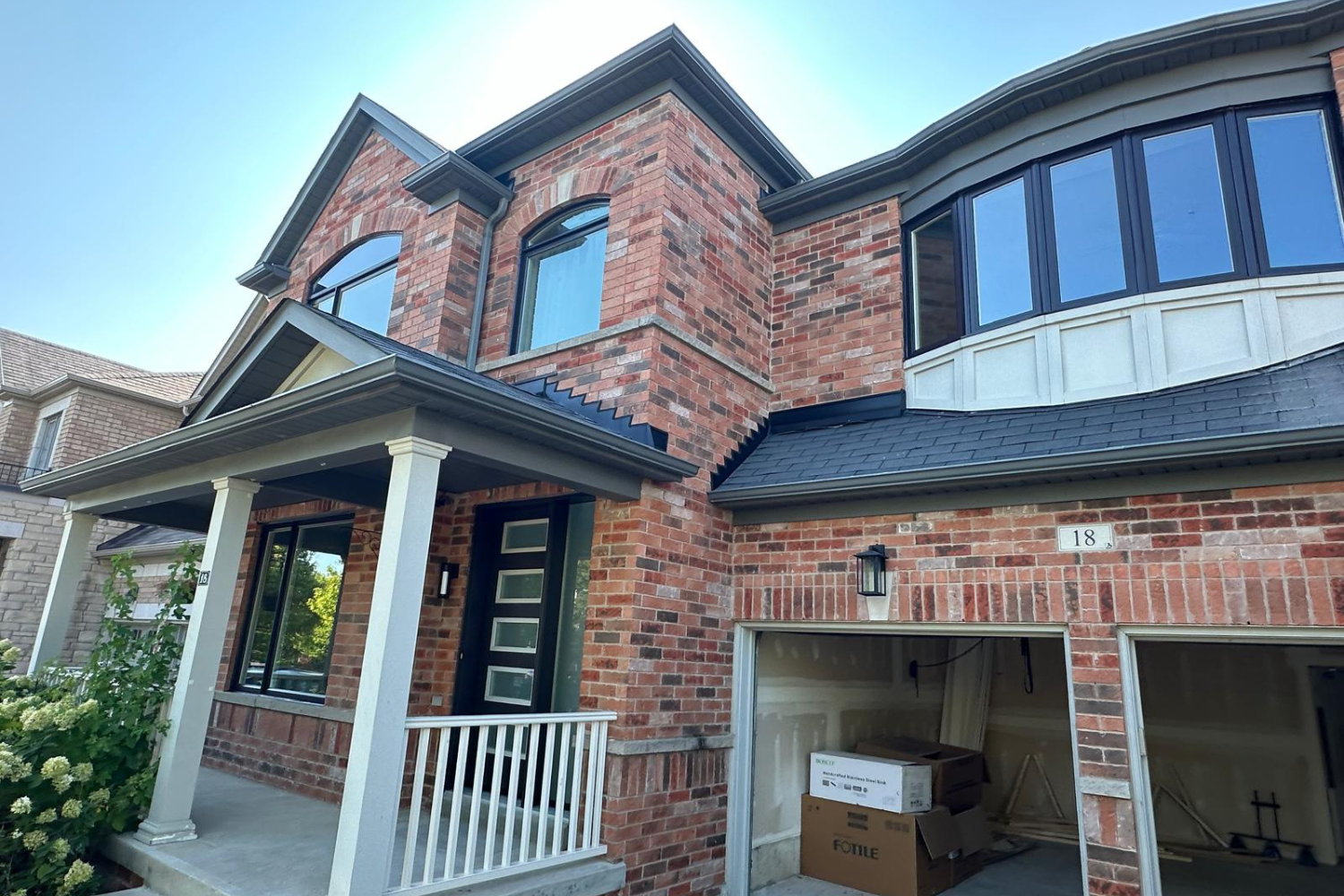
Felt Weatherstripping
Felt weatherstripping is another inexpensive solution, available in both plain felt or reinforced with a thin metal strip to help with durability. It is an excellent option for older homes or areas that are used less often.
Pros
- Budget-Friendly: Felt can be set up rather inexpensively, it is perfect for large areas where a cheap solution is required.
- Easy Installation: Felt is cut to size and stapled or tacked in. It’s pretty straightforward for a homeowner who is new to DIY projects.
Cons
- Least Durable: Felt weatherstripping tends to be victim to wear and tear and will only last one to two years. It is not a good fit for high-traffic areas as it will compress and break down over time.
- Unsuitable for Wet Conditions: Felt will absorb moisture, so it is not ideal for exterior windows that are exposed to rain, snow or dampness.
Top Tip: Felt weatherstripping is best used where durability and attractiveness are less of a concern, like on those windows that stay shut most of the year. It’s also great for temporarily stopping drafts in places where one intends to devise a more permanent solution later.
Ideal Applications
- Older Homes: Felt is often used in older homes to preserve the look and feel of vintage or historic windows. It can be a simple way to reduce drafts without altering the window’s appearance too much.
- Interior Doors: It works well on interior doors or windows that don’t get exposed to much wear or weather, such as a door leading to a rarely used room or closet.
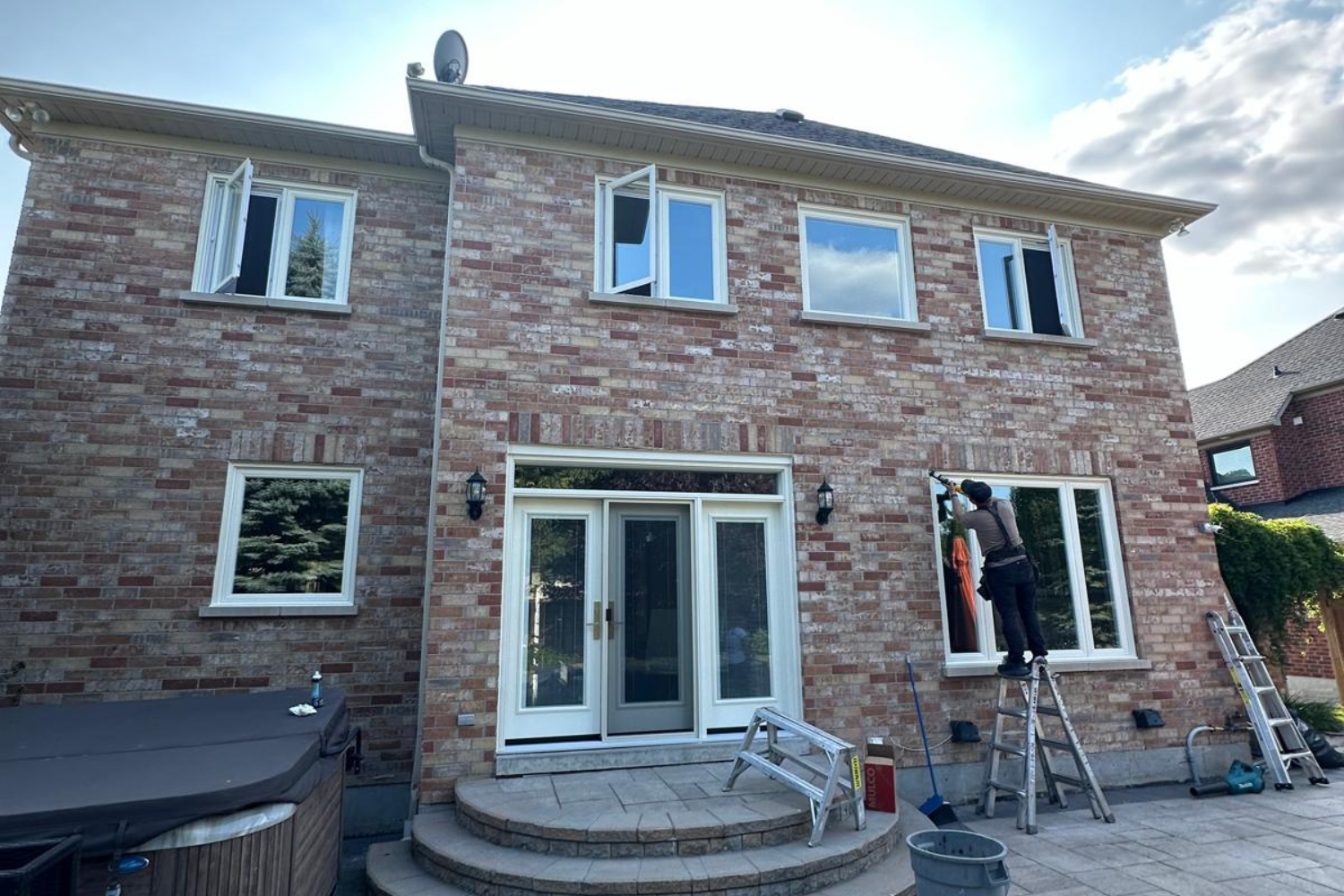
V-Strip Weatherstripping (Tension Seal)
V-strip, also known as tension seal, is one of the most durable types of weatherstripping. It is V-shaped and made of either plastic or metal. Once installed it creates a tight seal and lasts for years.
Pros
- Long-Lasting: V-Strip is best for high-traffic windows, it is durable and will be able to withstand frequent opening and closing of windows.
- Effectively Seals: Featuring a spring-like tension, the V-strip is a reliable and effective option.
Compatibility: It is flexible enough to be fitted on most window types, especially those that are subjected to frequent use.
Cons
- Installation Difficulty: Installing V-Strip requires precision to ensure the strip fits correctly into the frame. It may involve cutting, measuring, and placing it with care to avoid issues like sticking.
- Increased Resistance: Because of the tight seal, windows or doors may become slightly more difficult to open and close after installation.
Top Tip: When you install V-Strip on double-hung or sliding windows, allow room for ease of operation. Test the operation of the window or door several times after installation to make sure the seal is working with minimal friction.
Ideal Applications
- Double-Hung Windows: V-Strip works great on the sides of double-hung windows at the juncture of the sashes and the frame to help prevent air from escaping around the window.
- Sliding Windows: Apply vertically to the meeting stiles where the sliding windows close for an effective, extra-long-lasting seal.
- Doors: Apply to sides or tops of doors that are frequently used, like front entry doors, to stop drafts.
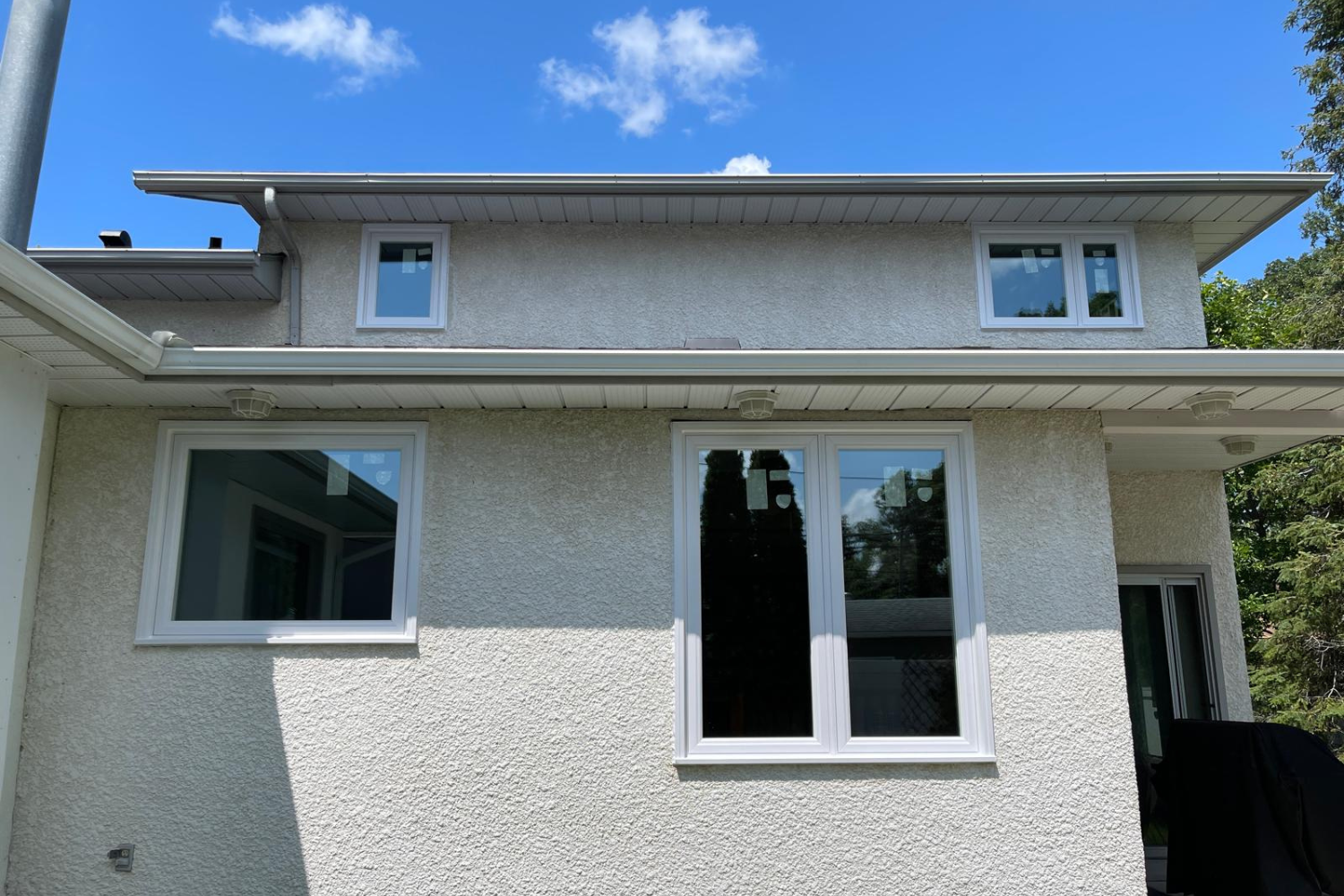
Compression Weatherstripping (Tubular Rubber or Vinyl)
Compression weatherstripping is made of heavy-duty materials like rubber or vinyl. When installed they create a tight seal by compressing when the window is closed.
Pros
- Durable and Long-Lasting: Compression weatherstripping is extremely wear-resistant and, therefore, suitable for the most exposed areas. They protect against temperature fluctuations, rain, and even wind without degradation.
- Excellent Sealing: Providing excellent resistance to drafts and moisture, compression weatherstripping is excellent for high-traffic windows, entry doors, patio doors or garage doors.
Cons
- Difficult Installation: Unlike foam or felt, this compression weatherstripping requires a little more effort and precision when installing. It needs to be a tight fit, so it may require a few tools to correctly hold the strip in place.
- Expensive: It is usually more costly than other types of weatherstripping because it outlasts and outperforms other types. The long-term cost is often outweighed by the long-lasting and effective benefits.
Top Tip: Use in high-traffic windows, patio doors, garage doors, or entry doors that are in direct contact with extreme weather conditions. This is because compression weatherstripping provides a tighter seal against cold air and moisture, even in windy or rainy conditions.
Installation Tips For Different Window Styles
Casement Windows
Casement windows open outward, requiring weatherstripping to prevent drafts and leaks. Foam tape is recommended for this window style because of its flexibility and ability to fill small gaps.
Installation:
- Clean the window stops and edges to remove any kind of dirt or residue.
- Cut the foam tape to the length of the top, bottom, and sides of the casement window.
- Then, attach the foam tape by peeling the adhesive backing off and press firmly along the stops for a snug fit.
Top Tip: Make sure that the tape is applied evenly to all sides of the window for a tight seal.
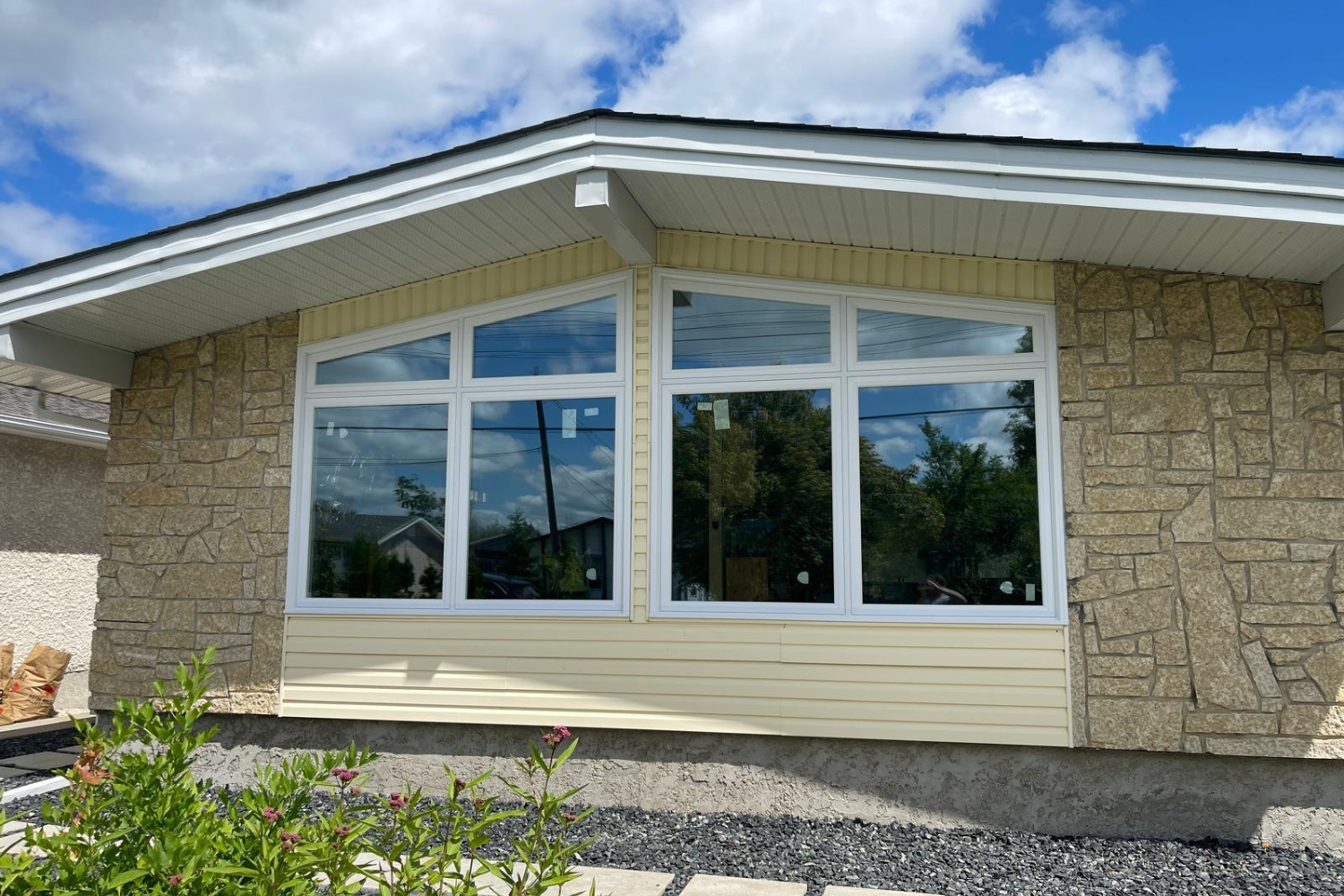
Single-Hung and Double-Hung Windows
It is really important to combine V-Strip along with foam tape for both single-hung windows and double-hung windows. Generally, V-Strip works on the sides where the sashes slide, while the foam tape works best along the meeting rail and the bottom sash.
Installation:
- Clean off the surfaces of any of the old weatherstripping and dirt that may have accumulated.
- Cut the V-Strip and the foam tape to the proper length.
- Test Fit: Place the V-Strip at the sides of the window frame and then tape with foam on both the meeting rail and the sash bottom.
- Press or Secure: According to the material used, it’s sometimes necessary to peel off the adhesive and stick; other times, nail in place. It should be snug with the frame but allow a smooth window operation.
Top Tip: Once fitted, open and close the window multiple times to test that the weatherstripping doesn’t catch and cause friction. If you feel resistance, then adjust the positioning of strips or foam.
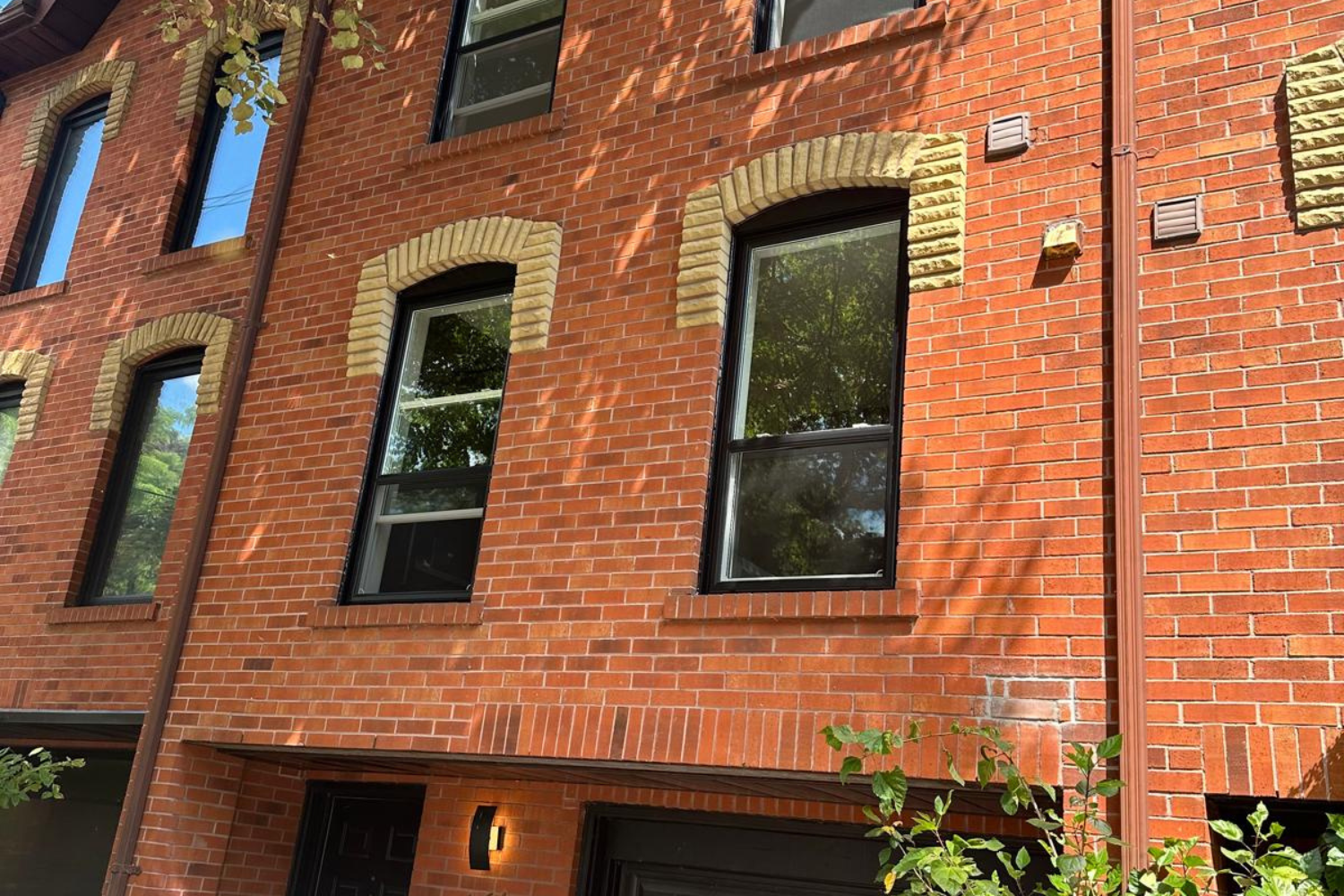
Sliding Windows
Sliding windows require weatherstripping down the vertical edges between the window and the frame. V-strip or tubular weatherstripping works well with these windows because it can create a tight seal without obstructing the window.
Installation:
- Clean off dirt and debris along the tracks and window edges.
- Measure and Cut: Gauge the weatherstripping against the track and the edges around the window. Then cut the V-Strip or tubular weatherstripping accordingly.
- Attach the Weatherstripping: Attach V-Strip along the vertical edges of the window or tubular weatherstripping in the tracks. Press in securely but avoid obstruction of the sliding mechanism.
Top Tip: Clean the tracks before installation and test the window several times after placing the weatherstrip to ensure smooth operation.
Weatherstripping your windows can be a really inexpensive and highly effective way to increase your home’s energy efficiency, you can save up to 20% on heating and cooling bills alone!
When weatherstripping just won’t cut it anymore, replacement windows are the next best thing. At NorthShield, we offer FREE in-home estimates so you can chat with one of our professional windows installers before you book an appointment.
Call us today for professional window installations in Toronto and the best window replacement in Winnipeg!

